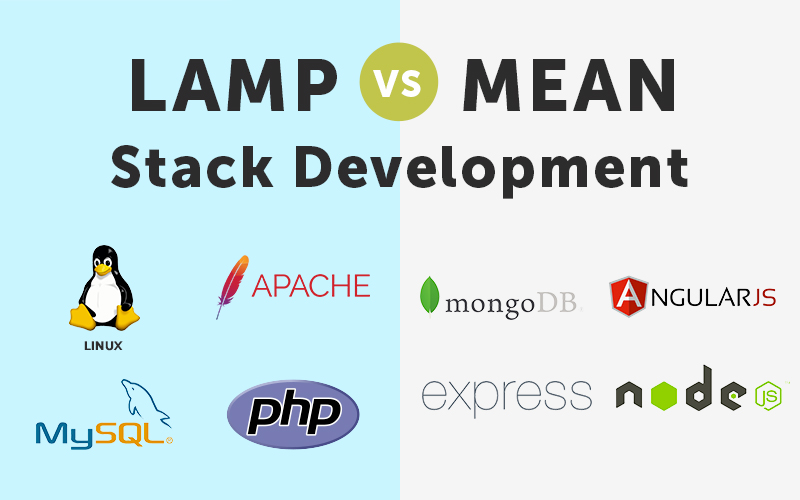In a business, when you are developing an application from scratch, it is necessary to understand the standardization, consistency, utilization and scalability of the software. Businesses nowadays are very selective for web stack development, especially while creating professional applications like blogs, web service apps etc.
In this article, we will cover the two important development stacks – LAMP and MEAN. We will uncover the technology used in the database, server environment, and backend language during the development process in these two web stacks.
LAMP Stacks: Definition
In simple terms, the full form of LAMP is Linux, Apache, MySQL and PHP. The LAMP is a set of software and subsystems that can perform tasks without any dependency on any external software and data. The LAMP works in a bunch of software, and it allows smooth integration between each other softwares, which makes it the most suitable platform for web application development.
LAMP stacks have the oldest and largest community and a wide range of libraries and tools. The LAMP stacks could be the best platform for hosting & development of high performing web applications. Its components include.
- Linux (Operating System)
- Apache (Web Server)
- MySQL (Code Managing the Database)
- PHP (Programming Language)
The LAMP is used by many popular industry leaders like Oracle, Zenda & Linux and many others. LAMP is highly considered for creating high-end performing enterprise applications.
Pros of LAMP Stacks
- The LAMP stacks offers a wide range of support services. PHP and MySQL backend support is provided by many hosting providers.
- The LAMP is an open source technology therefore the end-user and source can be changed according to developer needs.
- PHP & MySQL are easy to understand, therefore it becomes easier of beginners to adopt this technology.
Cons of LAMP Stacks
- The LAMP stack only supports Linux and its variant operating system technology.
- Switching between technology like PHP to python is very difficult in LAMP.
MEAN Stacks: Definition
The MEAN contains some software in the bundle known as MongoDB, ExpressJS, AngularJS, and NodeJS. The primary programming language of MEAN stacks is Javascript, and when all these software work together, it makes it easier for developers to build web applications. The database stored all the data in JavaScript Object Notation (JSON) format because every component is written in Javascript language.
- MongoDB (data persistence)
- Express.js (server-side application framework)
- Angular (client-side application)
- Node.JS (server-side environment)
The applications developed using MEAN stack technologies are easily scalable, flexible, and extensible. MEAN stacks is an ideal option for cloud application hosting.
Pros of MEAN Stacks
- The MEAN stack uses a single programming language – JavaScript, which makes it most preferred sacks among developers. It also allows easily switching between client and server.
- Due to its open-source solutions the application developed using MEAN stack technology is easy to maintain and robust.
- The MEAN stack offers real time application demonstration. In this modern era the real time app demo can be beneficial for subscribers and users.
- The primary advantage of MEAN stack is it allows cloud computing technology. Therefore it makes it easy for various users to access large information at the same time.
Cons of MEAN Stacks
- MongoDB is not suitable for large enterprises, because there seems to be large data loss when developers try to accomplish network partitioning.
- The Express.Js consider as poor isolation for the server from business logic.
- If you develop an app using MEAN stack technology it becomes difficult for the developer to switch back to the old approach.



